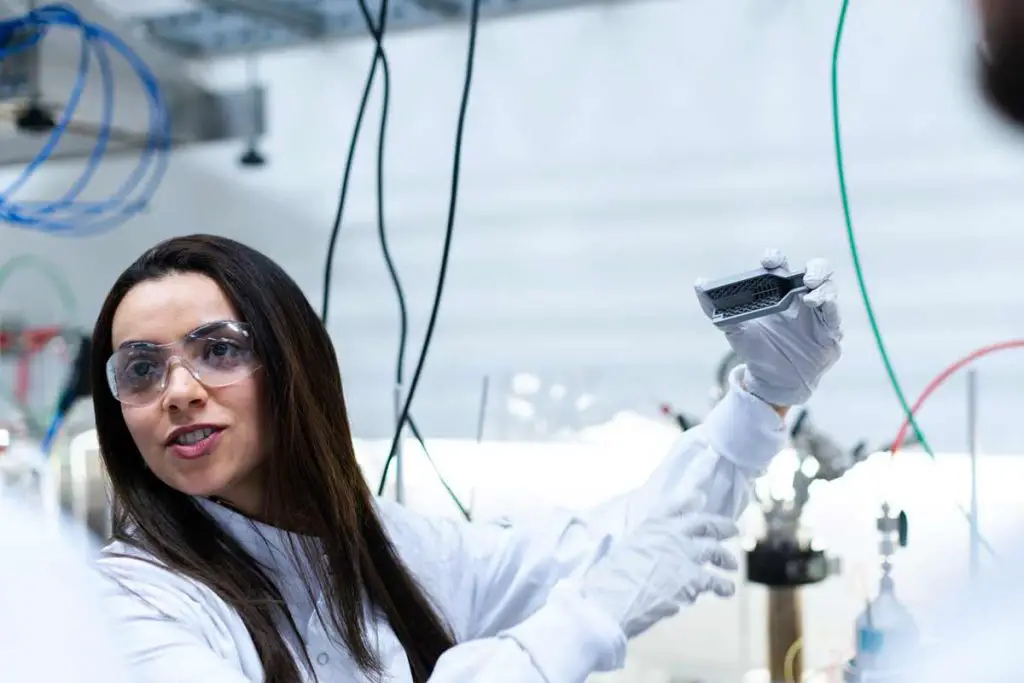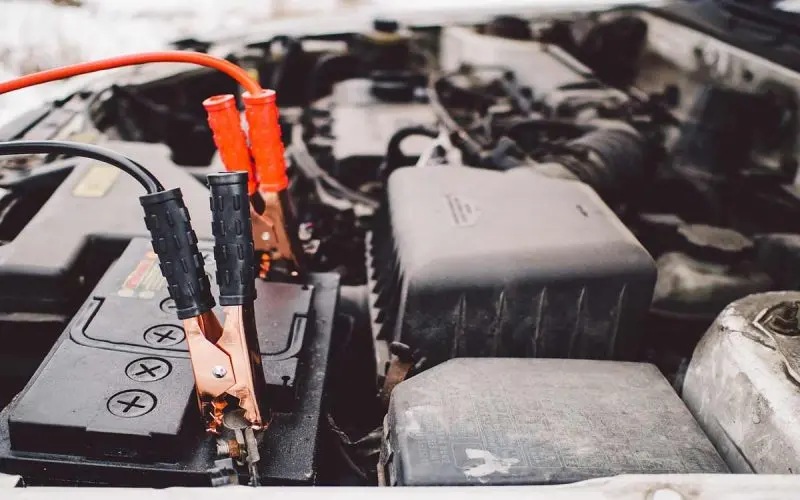Table of Contents Show
Battery reconditioning is a process in which you bring back to life a healthy battery back to its full charging capacity and standard electrolyte levels. This is highly important even if you have a regular or luxury car.
Almost every car owner faces the issue of acid stratification and low charge issues every once in a while.
Lead sulfate is formed every time a car battery is discharged to power the vehicle. This massive buildup of chemicals affects the charging and discharging capacity of a battery.
There are various types of batteries that can be reconditioned including AGM, lead-acid batteries, Gel batteries, Lithium-ion batteries, NiCad, and NiMH rechargeable batteries.
Every car owner must have practical knowledge about battery reconditioning, to keep your battery performing at the optimal performance.
Navigation:
Why should you recondition your batteries?
Step By Step Guide to Recondition your Battery
- Prepare the Battery
- Check Battery Voltage
- Wash battery plates
- Reconditioning the Battery
- Recharge your battery
- Load testing
How to Protect Yourself while Battery Reconditioning?
Why should you recondition your batteries?
Knowing how to recondition a battery is highly essential for every car’s owner or mechanic, to provide optimal performance of the battery to your car. It would save a lot of money and the hassle a dead car battery brings, especially if you are in the middle of nowhere.
Additionally, throwing out batteries that can be reconditioned greatly harms the environment.
You can even charge people for battery reconditioning and earn a bit of side money, as most people aren’t skilled in the art of battery reconditioning. You can even go on to sell reconditioned batteries as it still has the life to power a car, once it becomes reconditioned.
Reconditioning your battery brings practical benefits to the environment as that leads to lesser production and leaching of acid into surroundings.
If these highly acidic chemicals enter the environment; they can damage the soil, pollute waterways and groundwater, and can even be ingested by animals which will definitely have severe health consequences.
Other Environmental Issues of batteries include:
- Increased Lead Mining
- Health Problems for Mine Workers
- Health Effects on building occupants (in case of a fire)
- Environmental Hazards of Battery Disposal
In case your battery can’t be reconditioned, don’t worry. Almost 100% Lead Acid Batteries are Recycled!
Step by Step guide on Battery Reconditioning
Here at EnvironmentBuddy we decided to make a small guide on battery reconditioning, mainly to reduce battery waste.
This is what you will need to recondition your battery. You’ll find most of these tools you need around the house.
If you don’t have these, click on the links below to find them on Amazon.
What you’ll need:
- Distilled water
- Bucket
- Apron
- Funnel
- Baking soda
- Epsom salt
- Voltmeter
- A flat-headed screwdriver
- Goggles
- Disposable gloves
- Battery reconditioning charger
1. Prepare the battery
Make sure you have worn all the safety gear before you start to prep the battery. Be sure to work in a well-ventilated environment that is preferentially near to a water source in case you happen to get a spill or splash on your skin or clothes.
Make sure the terminals of the battery are clean and corrosion-free.
The car battery should be removed from the car while you are carrying out the reconditioning process.
If the batteries terminals are corroded, you can make a baking soda solution by mixing baking soda and water in the ratio of 1:1 or 2:1.
2:1 ratio means 2 cups of baking soda with 1 cup of water.
Mix baking soda and water in a container until you reach a paste-like consistency after which, use a toothbrush and dip it into the prepared solution and apply it onto the battery terminals. This will help to remove any corrosion or salt buildup.
However, if you come across heavy corrosion on the terminal battery, we recommend that you use sandpaper grit, steel wood, or a steel brush as it will provide more abrasion and scrape the corrosion material gathered on the terminal.
2. Check battery voltage
Once the battery has been prepped, you then need to check the voltage of the battery to determine the condition of the battery. This should be done using a voltmeter that you may have to purchase from an electronic shop.
Attach one crocodile plug on the voltmeter’s black wire to the black (negative) terminal of the battery and the other red wire to the red (positive) terminal.

The voltmeter will immediately give you a reading that shows you the current voltage of the battery. The reading must be above 12.6 volts, and while attached in the car, it must be 13.7 to 14.7V.
However, if you see a reading below 12.4 volts then your battery requires reconditioning.
3. Wash battery plates
Wear Gloves during this step.
Take your screwdriver and start removing the battery caps. Secure your battery caps somewhere safe.
Slowly lift and tilt the battery to start pouring out the old electrolyte solution into the bucket. If any spills occur during the pouring of the electrolyte, us a good amount of baking soda to neutralize the spilled electrolyte.
To neutralize the battery acid solution taken out from the batter, we need to put half a pound of baking soda powder into the bucket. Another option can be to make a 3:1 baking soda and water solution to pour into the bucket to neutralize the electrolytic solution form the battery. This is so that hazardous acidic solution does not harm the environment.
A 3:1 ratio baking soda means for every 3 cups of baking soda you will be adding 1 cup of water. This will make a paste like solution.
Now we come to cleaning the battery plates.
For this, you need to prepare another solution of baking soda and water in a ratio of 2:1 or 1:1.
After you’ve made the solution, fill each battery cell, and close it again with battery caps we collected.
Shake the battery for about a minute to thoroughly allow the baking soda solution to flow and move around inside the battery and react with any remainder acid.
Empty the battery once again into a bucket.
4. Reconditioning the Battery
Now you need to replenish the electrolytic solution of the battery by providing it with a new one.
All you need is Epsom salt and distilled water to create a new solution.
The concentration of the Epsom salt needs to be 1 molar, this can be created by dissolving 120 grams of Epsom salt in 1 liter of distilled water. You can even mildly heat the solution to ensure complete dissolution of salt into the water.
Once the solution has been made, fill each battery cell to a full level, and cover it with the battery caps. Usually the ‘full’ level is shown by the battery. In case you can’t see it, fill it up three-fourths of capacity.
Once filled with electrolyte solution, your battery is now ready to be recharged.
5. Recharge your battery
Now it’s time you recharge your battery. Connect the red wire to the red terminal of the battery and the black wire to the black terminal the same way you did to check the battery voltage.
You will need a battery charger for this.
Place the charge in slow mode at 2 amps with 12V (Volts) and allow it to rest for 24 to 36 hours.
Do make sure to check up on it once or twice to make sure the system isn’t heating up. In that case, give it a rest. Try again after it cools down.
Once it has been charged, measure the voltage of the battery (keeping in mind that it should now be between 12.4V to 12.6V).
6. Load testing
This can be done using a battery load tester, available on any hardware store near you.
To pass the load testing it must sustain 9.6V for 15 seconds at half of the CCA rating.
The CCA rating refers to Cold Cranking Amps being delivered by a 12V car battery at zero degrees Fahrenheit and a minimum of 7.2V for 330 seconds.
Your battery needs to have a higher CCA rating as it degrades through time to cope with the cold weather. If your battery fails the first load test, it must be discharged and recharged back and the test must be repeated to check the CCA rating.
How can you protect yourself while reconditioning your battery?

Safety measures must be the highest priority while reconditioning your battery, to prevent yourself from accidents or mishaps.
Remember the products you are dealing with are highly corrosive and harmful when they come in contact with your skin, eyes, or clothing.
- Always choose to wear disposable rubber gloves to protect your hands
- Wear goggles to protect your eyes from any spillages or splashes
- Wear an apron to protect your clothes
- Always have a baking soda solution prepared (like we taught you) to immediately neutralize the electrolytic solution that spills
- The area must be well ventilated so that there can be no suffocation if the electrolytic vaporizes into the air
- Ensure continuous water supply ( Just in case of an emergency)
Frequently Asked Questions (FAQs)
How long will a recondition battery work for?
It depends on what types of battery you are using. On average,a reconditioned batter can serve you for a year (sometimes two).
How much do you end up saving by reconditioning a battery?
A new battery can range from 75 dollars to 100 dollars; you can save up to 25-50% of the retail cost when you recondition you battery.
How long can a battery sit without being used?
An unused battery has a life of about 3 to 4 years.
Can we use vinegar to refill the battery?
Never add vinegar as an alternative to refilling the battery as it will lead to formation of lead acetate in the terminals. Instead, add distilled water to cover up for the lost electrolyte.
When should you not recondition your battery?
You shouldn’t recondition your battery under following conditions:
- If you have done it for about three times before
- If the battery is sufficiently damaged, making it unsuitable for reconditioning as it may just get worsened.
- If you do not have the required materials to carry out the process.
- If you do not have proper expertise (this article fixes that for you).
What is the estimated car battery life until it is completely drained by turning on all the car lights?
A battery can roughly last for about 4-8 hours when lights are left on. Fortunately, with this guide you’ll be able to crank up the battery in a day.
Are there other ways to recondition a battery?
Yes, there are other ways for battery reconditioning. It mostly depends on the type and size of your battery.
Here are some of the other methods:
- Replacement of battery cell
- Replacement of electrolyte solution
- Deep cycle charging
- Jump starting





